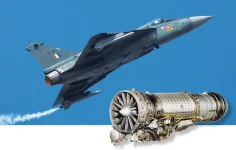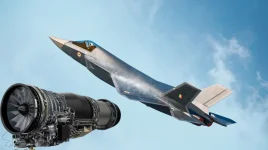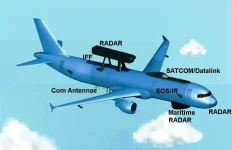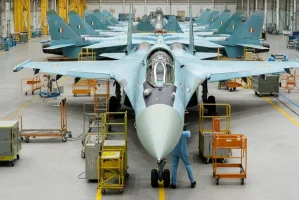- Views: 4K
- Replies: 27
In a major step toward military aviation self-reliance, India has solidified a partnership with French aerospace leader Safran to co-develop a next-generation fighter jet engine.
This collaboration with India's Gas Turbine Research Establishment (GTRE) aims to produce a powerful 120 kilonewton (kN) thrust engine destined for the future Advanced Medium Combat Aircraft (AMCA) Mk2 and the naval Twin Engine Deck-Based Fighter (TEDBF).
The new engine's specifications signal a monumental leap in India's technological capabilities. At its core is a planned Turbine Entry Temperature (TET) of 2100 Kelvin (K), a critical performance benchmark that places it in the elite category of the world's most advanced powerplants.
This high-temperature operation is key to achieving greater thrust and fuel efficiency, potentially allowing India to surpass decades of Chinese progress in jet engine technology, particularly when compared to the WS-15 engine designed for China's J-20 stealth fighter.
A higher Turbine Entry Temperature directly translates to superior engine performance. The 2100K target puts the Indo-French engine on par with the powerplants of top-tier Western fighters, such as the Pratt & Whitney F135 used in the American F-35.
This marks a significant breakthrough for India, whose previous indigenous effort, the Kaveri engine, was unable to achieve the required thrust for modern combat aircraft due to challenges in mastering high-temperature material sciences.
The partnership with Safran provides India with crucial access to their expertise in single-crystal turbine blades, ceramic matrix composites, and advanced cooling technologies that are essential for operating an engine at such extreme temperatures.
China's aerospace industry, despite considerable investment and progress, has historically faced difficulties in developing jet engines that match the performance and reliability of their Western or Russian counterparts.
Its premier engine, the Shenyang WS-15, which is intended for the J-20 fighter, is estimated to have a TET of around 1800-1900K. This is substantially lower than the 2100K goal for the new AMCA engine, indicating a persistent gap in material durability and thermal efficiency.
Many operational J-20s are still believed to be flying with the older and less powerful WS-10C engine, which has a TET of approximately 1700-1800K and requires more frequent maintenance.
The development path chosen by India also provides a strategic advantage. While China has spent decades on an iterative process, often relying on reverse-engineering foreign designs, India's collaboration with Safran is set to include a full Transfer of Technology (ToT).
This approach allows India's defence industry to bypass years of trial-and-error and absorb proven, cutting-edge technology directly. The timeline reflects this advantage, with engine testing projected to begin by 2028 and production slated for the early 2030s, aligning perfectly with the planned induction of the AMCA Mk2.
The implications of this project extend beyond a single aircraft. By mastering the complex technology behind advanced aero-engines, India is building a robust industrial ecosystem for future development.
This new engine could be a stepping stone for creating even more powerful systems required for sixth-generation fighters, which may include features like directed energy weapons.
This collaboration not only strengthens India's immediate military capabilities but also positions the nation as a formidable player in the global aerospace and defence sector for decades to come.





